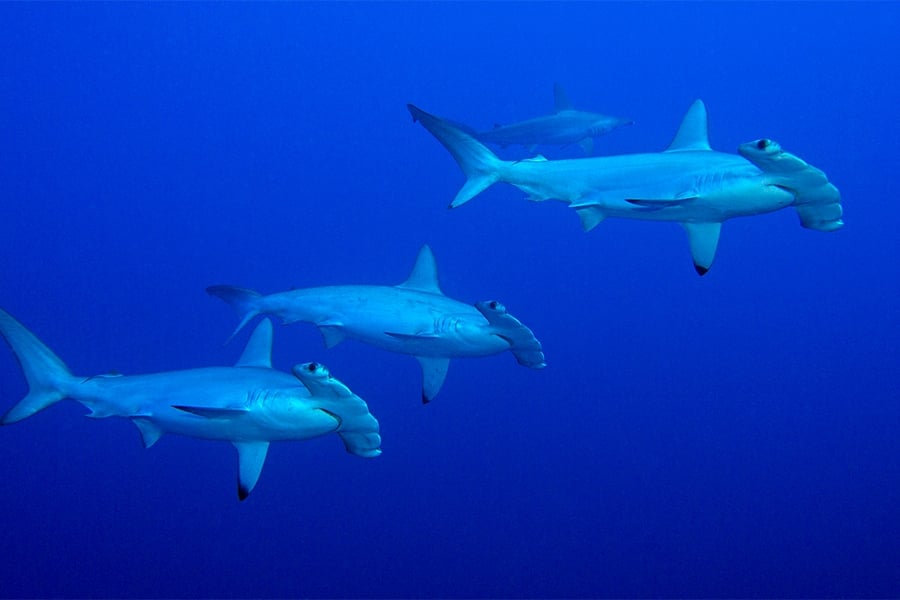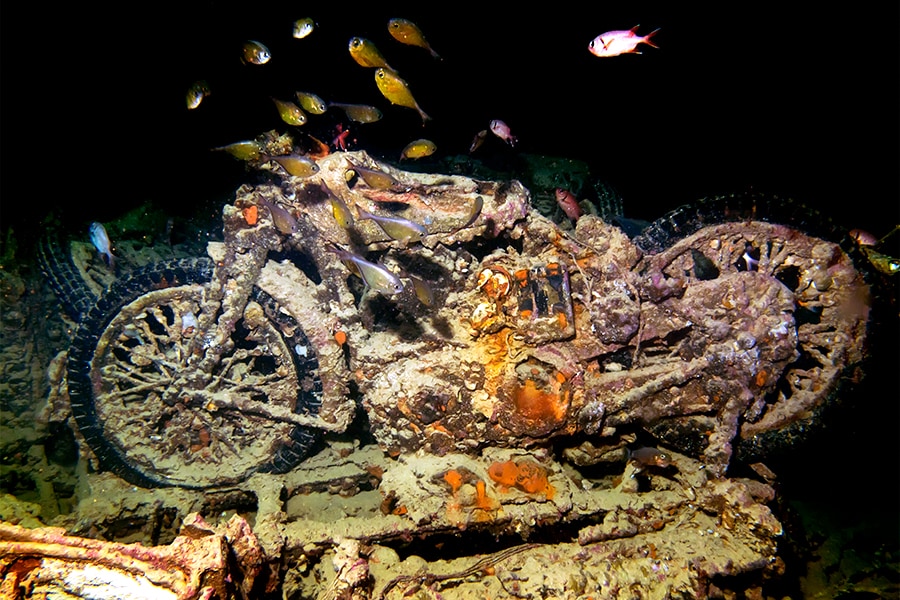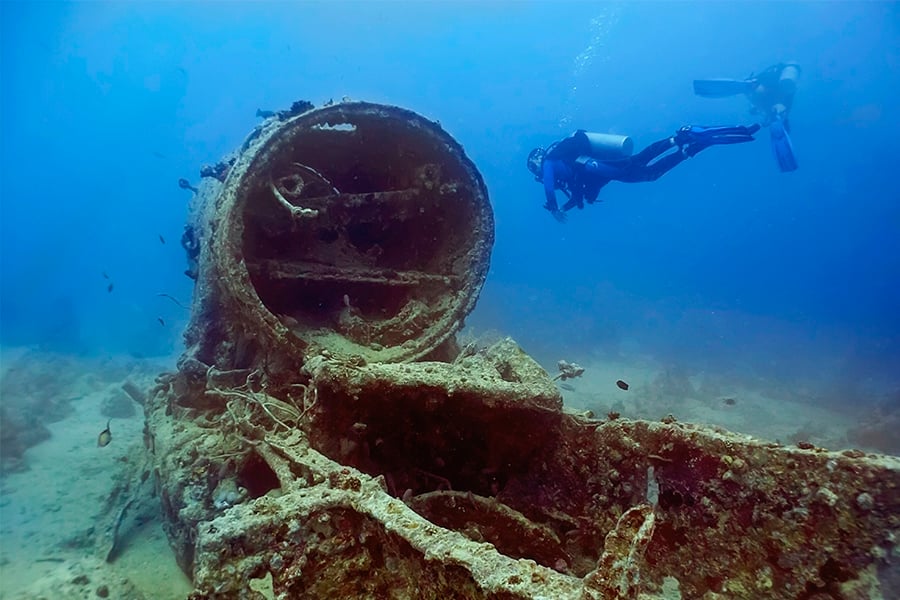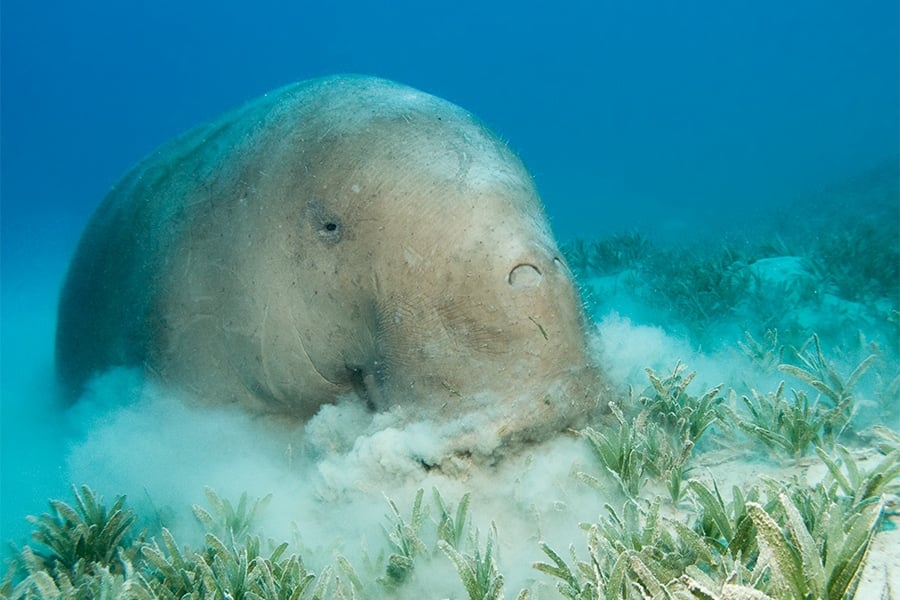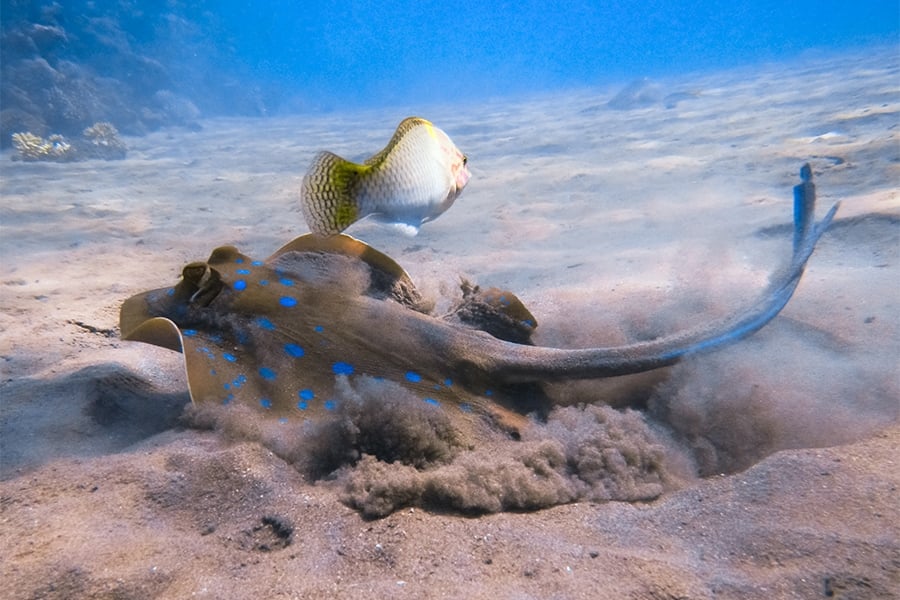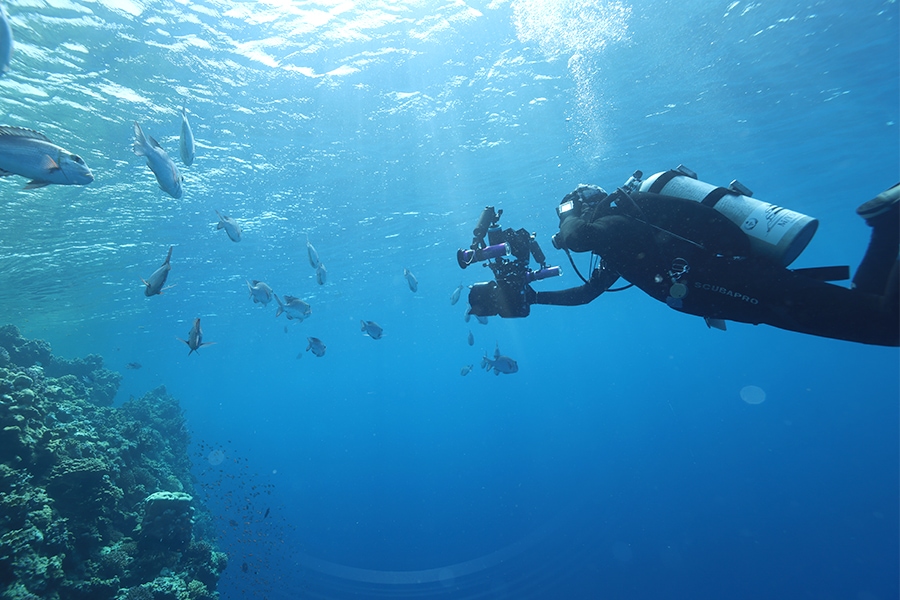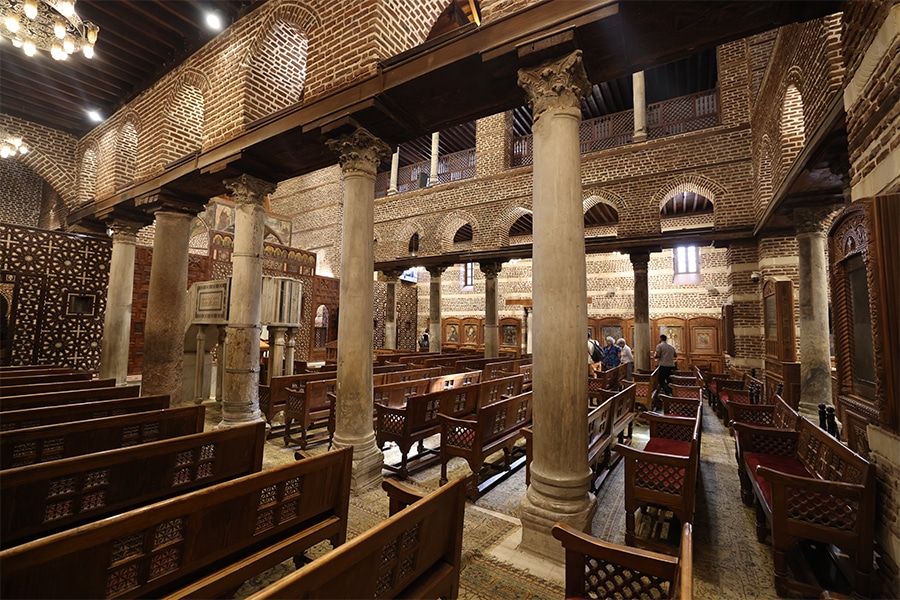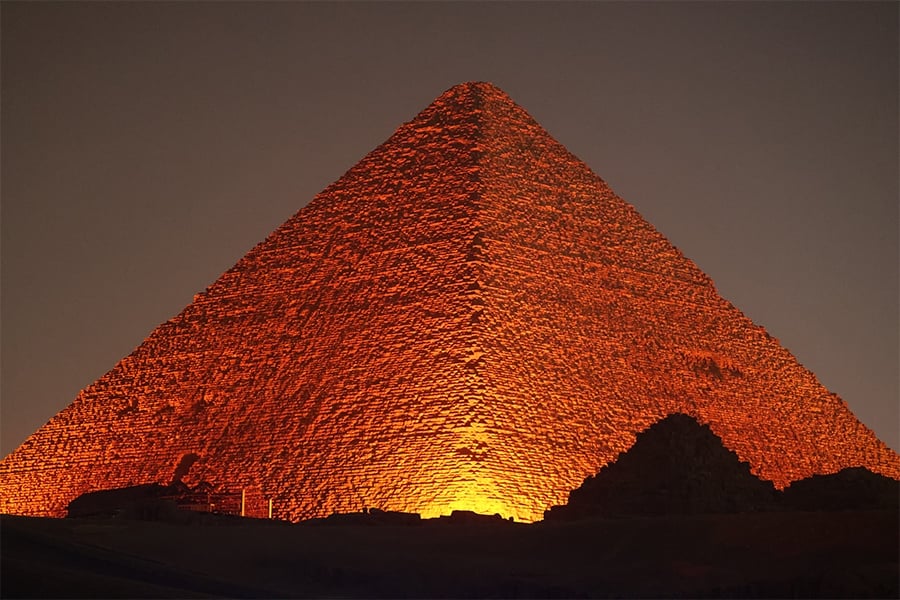Never ask a starfish for directions
Anonymous
Red Sea Dive Liveaboards
Depart Hurgada or Port Ghalib, Egypt | Shipwrecks, 7 Species of Sharks, Colorful Corals, Kitesurfing
The Red Sea is considered one of the world’s top dive destinations. With over 1,000 species of fish, vibrant soft corals, unique topographies, world-class wreck diving and sharks, the Red Sea is at the top of most divers’ bucket lists. Divers joining a liveaboard in Egypt can experience the SS Thistlegorm, one of the most famous wreck dives in the world. Trips to Brothers Islands, Daedalus and Elphinstone reefs produce close encounters with a variety of sharks including oceanic whitetips, grey reef and hammerhead sharks. Tiran and Ras Mohamed National Park, in the Northern Red Sea, is where you will find Shark Reef and Yolanda Reef, which are teeming with fish life, covered with coral and home to its namesake wreckage Yolanda.
Red Sea Diving
The Red Sea is one of the world’s top dive destinations. Vibrantly colored reefs, world-class wrecks and an excellent variety of dive sites attract divers from around the globe to this underwater paradise. With reefs, wrecks, dolphins, sharks, Spanish dancers and giant clams, the Red Sea offers unique diving experiences to those who make the journey.
From one of the world’s most famous wreck dive sites, the SS Thistlegorm, to close encounters with numerous shark species, including oceanic whitetips, Red Sea divers can see the best of the best without blowing budgets. In the north, divers flock to areas including Ras Mohammed National Park, Abu Nuhas, Safaga, Gubal Island, Sharm el Sheikh and plenty more. Further south, popular stops include the Brothers Islands, Daedalus, Elphinstone, Rocky Island and Zabargad. Of course, the optimum way to visit these scattered dive sites is by liveaboard.
Red Sea Diving Highlights
Sheikh to Rocky Island and Everything in Between
These itineraries are typically categorized into Northern or Southern Red Sea and are relative to their location along the Egyptian coast. Southern itineraries are known for shark diving at pinnacle reefs, while northern itineraries highlight wreck diving, although the northern reefs are also phenomenal.
The star of the show is in the Central Red Sea. The Brothers, Daedalus and Elphinstone itinerary (often referred to as BDE) attracts thousands of divers to its healthy reefs each year, hoping to come face-to-face with oceanic whitetip sharks.
All Star Scuba Scene

- 159 feet (48.5m) long and 34.5 feet (10.5m) wide
- The vessel was built in 2023
- Accommodates up to 28 guests plus crew members
- Twin bed cabins with private bathrooms
- Suites with seaview windows and private bathrooms
- Dive deck with personal gear station and a camera table
- Up to four (4) dives per day including night dives*
- Tenders with custom tank racks
- Includes all meals, snacks and non-alcoholic beverages
- World cuisine dining
- Ground transfer to/from airport and vessel/hotel
- Multilingual crew; English, Arabic, German spoken; translators available with advance notice
- Kitesurfing and Shark Week trips
- Managed and regulated by the Egypt Chamber of Diving and Watersports (CDWS)
From $1,380 all-inclusive
Red Sea Shark Diving
Shark encounters are a major attraction to the Red Sea. Oceanic whitetips are usually first to be mentioned, but numerous species are frequently spotted, including hammerheads, threshers and gray reef sharks.
Southern itinerary destinations like Elphinstone, Daedalus, the Brothers Islands and the deep south region around the St. John’s Plateau area are the most popular Red Sea shark diving locations. October and November are prime times for spotting oceanic whitetip sharks, but May and June also offer the unique possibility of seeing schooling hammerheads in the deep south.
To support the popularity of shark diving in the Red Sea, All Star Scuba Scene runs Shark Weeks throughout peak season. During these trips, dives sites are chosen to give passengers the best chances for shark encounters. Dr. Elke Bojanowski (founder of the Red Sea Sharks Trust) offers presentations on shark conservation, behavior, research and insights throughout the week. Divers with cameras can assist Dr. Bojanowski’s research through photographic identification during dives.
Red Sea Wreck Diving
Wreck diving in the Red Sea’s northern region is unparalleled in quality and quantity. Most of the sites are within recreational diving depths, suitable for travelers with minimal wreck diving experience. Recreational divers can penetrate many wrecks, while tec divers can access sites requiring more advanced skills.
Divers of all skill levels can visit the Barge at Gubal Island, the wreck of the Yolanda in Ras Mohammed, the SS Dunraven, all four wrecks of Abu Nuhas and more. Even Big Brother Island in the central Red Sea is home to two wrecks: Numidia and Aida.
Though all the northern Red Sea wrecks are stellar, the shipwreck SS Thistlegorm stands alone in its fame. Rediscovered by Jacques Cousteau himself, divers have visited this sunken piece of World War II history for more than 50 years. All Star Scuba Scene passengers can gain entry to cargo holds blasted open by German fighter pilots to see exciting marine life and war artifacts like motorcycles, rifles and even soldiers’ boots.
Experience All Star Scuba Scene
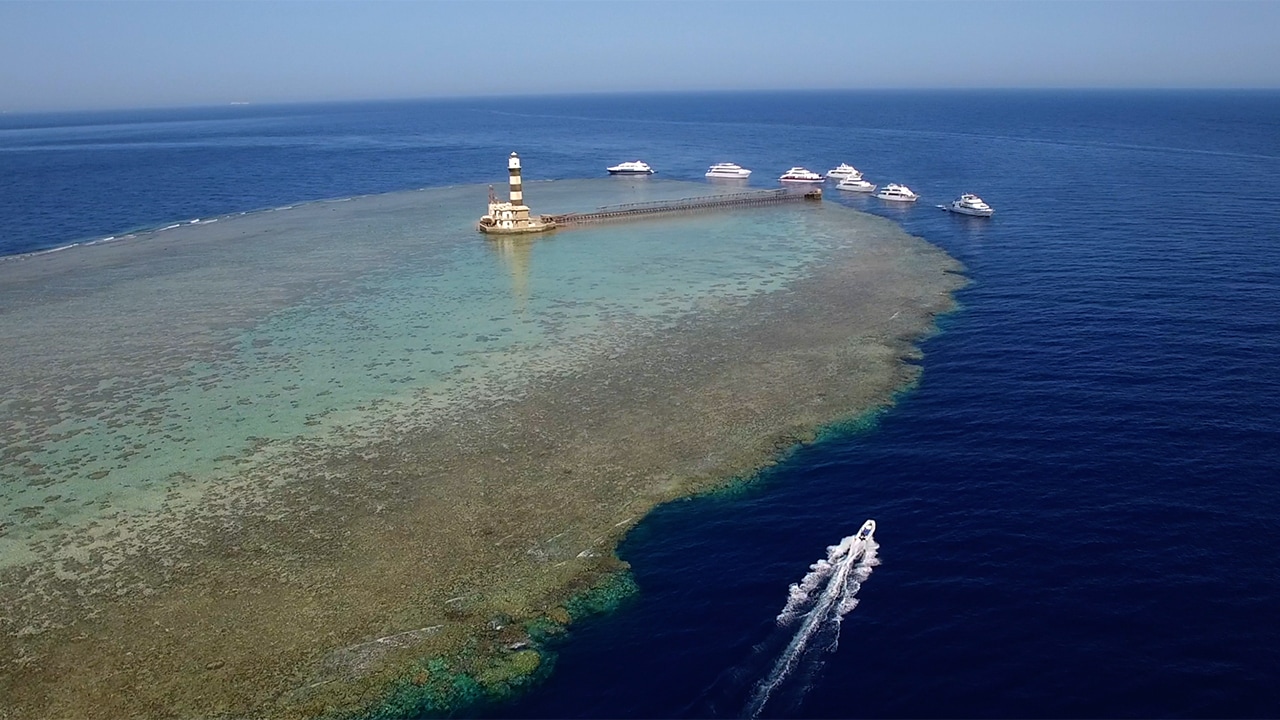
Top Dive Sites in the Red Sea
Northern Red Sea Dive Sites
- SS Thistlegorm
- Shark and Yolanda Reef at Ras Mohammed National Park
- Abu Nuhas wrecks
- Dolphin House Reef
- Thomas Reef in the Strait of Tiran
Central/Southern Red Sea Dive Sites
- Elphinstone Reef
- Daedalus Reef
- Brothers Islands
- Rocky Island
- St. John’s Plateau
When to Dive in the Red Sea
Red Sea diving is excellent year-round, but water temperatures can vary quite a bit (from low 70s to mid-80s). Packing/renting an appropriate exposure suit is very important. To assist guests, All Star Scuba Scene rents 5mm wetsuits, sufficient for most divers.
The main reason for choosing one specific time of year over another in the Red Sea is what can be seen and when. The peak season for diving with oceanic whitetip and thresher sharks is October-November. The peak season for schooling hammerheads is around May and June. Wrecks and dolphins are visited more regularly from December to April.
Red Sea Diving Conditions
Red Sea diving is suitable for divers of most experience levels. Visibility is excellent, and currents are generally minimal, but many sites are at depths beyond 60 ft. (20m). All Star Scuba Scene trips require an Advanced Open Water (AOW) certification to dive every site.
Surface conditions can be a little rough, especially around the sites in open water (such as Daedalus and Brothers), so some/all of the dives may be done from tenders.
Red Sea Underwater Photography
Fascinating subjects and excellent visibility make the Red Sea a hotspot for underwater photographers. Discover plenty of opportunities for macro, wide-angle and over-under shots when surface conditions are mild surrounding islands like Daedalus and Big Brother.
Macro photography is popular, and species are plentiful in the Red Sea. An observant diver will be pleasantly surprised at the abundance of colorful nudibranchs and other tiny creatures meandering around dive sites. Night dives offer the best chance of capturing that rare picture of a swimming Red Dancer nudibranch, one of the Red Sea’s most desired bucket list critters.
Many large marine animals can also be observed and photographed in the Red Sea. Sharks, of course, are excellent examples. Oceanic whitetips spend much of their time in shallow water, and they’re willing to get extremely close to divers. Well-lit and favorable circumstances improve the likelihood of a phenomenal shot of these encounters. Divers are invited to submit shark photos to Dr. Bojanowski to assist her with her Red Sea Shark research. A typical dive experience includes dolphins, manta rays, giant morays and the occasional whale shark.
The breadth and depth of dive site photo ops have garnered the Red Sea a solid reputation for signature shots. The classic view of a healthy reef of soft corals through a thick blanket of vibrant anthias is a sight to behold, and the imagery does justice. Wrecks offer similarly iconic photos. With such picturesque dive sites, it’s almost a shame to get in the water without a camera to document a Red Sea visit!
Red Sea Tec Diving
For those who desire to explore beyond the limits of recreational diving, the Red Sea boasts an excellent selection of dive sites that will impress even the most seasoned tec divers.
North and Tiran is a fascinating Red Sea itinerary for tec divers. Highlights include numerous wrecks – many of which are only accessible to tec divers – are scattered around the Sinai peninsula, and dramatic canyons that start at depths of over 100 feet (30m).
Brothers, Daedalus and Elphinstone (BDE) trips also provide the opportunity for tec diving. The two wrecks near Big Brother Island, Numidia and Aida, are best explored by divers with technical certifications, as is the Arch at Elphinstone Reef.
Added bottom time at more substantial depth limits offer ample opportunities to explore these rarely visited underwater gems. All Star Scuba Scene can accommodate tec divers on any standard dive trip with advanced notice, but only northern itineraries are suitable for technical instruction.
Tec divers aboard the All Star Scuba Scene can take advantage of rebreathers, 40-100% nitrox blends, trimixes and longer dive times. Diving enthusiasts who have attained certifications ranging from Advanced Nitrox to Extended Range Nitrox can expect a lower limit on the number of dives available simply because of extended times below. If you are interested in utilizing or earning a tec diving certification on your Red Sea trip, Contact Us to learn more.
How to Travel to Egypt
All Star Scuba Scene departs from Hurghada or Port Ghalib, depending on the itinerary. Our All Star Scuba Scene trip costs include round-trip airport ground transfers from/to airport/hotel and vessel.
Direct flights into Hurghada (HRG) typically have a layover in Istanbul, Doha, or Dubai. Port Ghalib’s nearest airport is Marsa Alam International Airport (RMF). Flying into Marsa Alam usually means connecting in Cairo (CAI), which has easy and convenient connections in Europe, most commonly Paris, Amsterdam or London.
For information about Egypt’s Covid travel protocols, visit our Covid Travel Info page.
Egypt Land Tours
For travelers planning to arrive early or extend their stay, All Star Liveaboards can assist with coordinating land tour arrangements. An English-speaking guide is provided with every tour, so travelers can enjoy exploring the country stress-free. Guides who speak other languages are also available with advanced notice.
Cairo tours, ranging from 1 to 4 days, can include everything from museums to local mosques and shops to the Pyramids of Giza.
Three to four-night Nile Cruises between Aswan and Luxor allow travelers to visit some of Egypt’s most impressive historical monuments.


